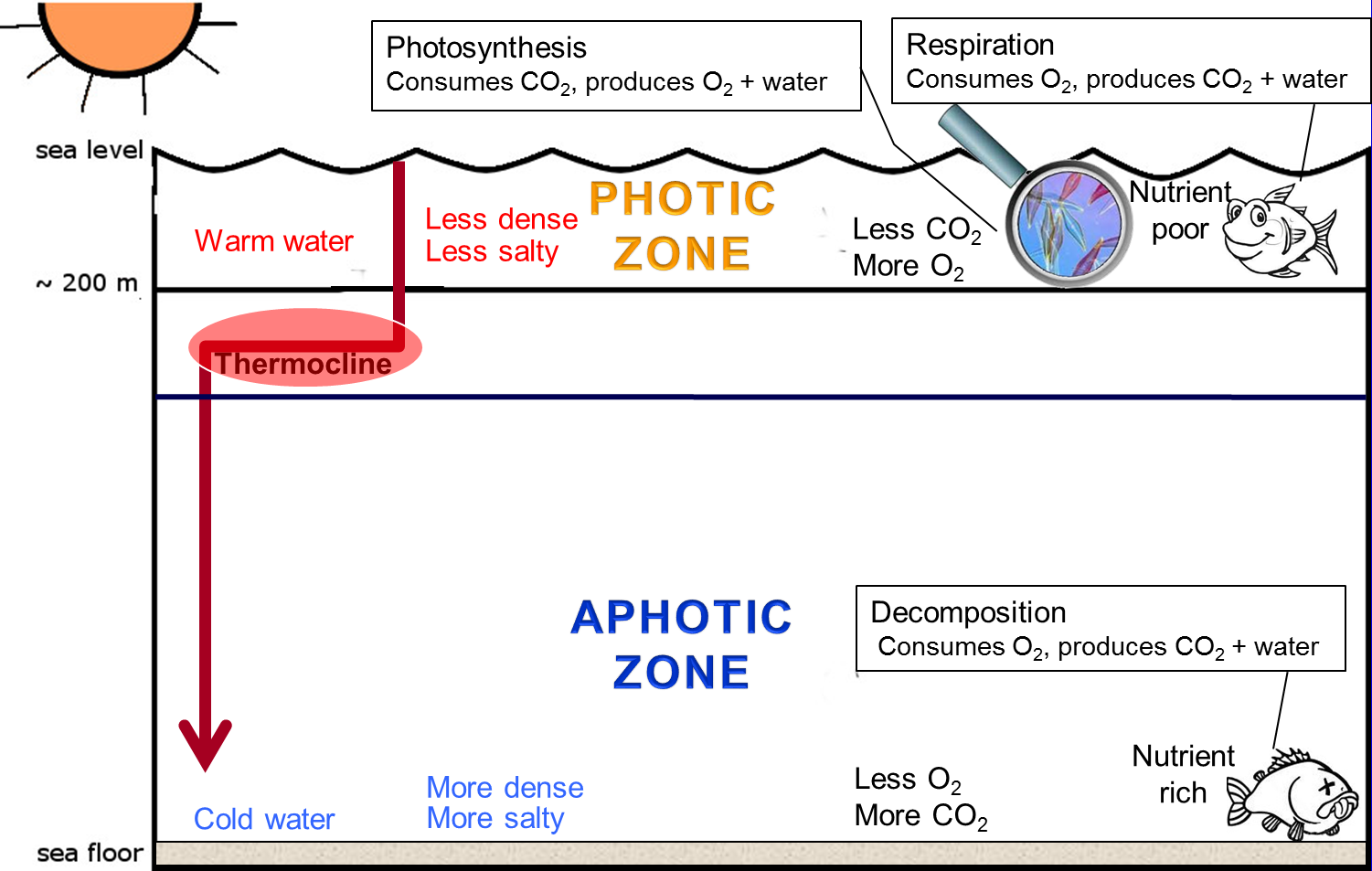Putting it all together
Many processes regulate the composition of seawater. The concept of a steady state ocean summarizes the idea that ions are added to and removed from the ocean at the same rate.

Sunlight heats up the ocean. The surface layer is affected the most, and is therefore the warmest. As you travel deeper into the ocean, the less light there is and the colder the water gets. This shift from warm to cold water is called the thermocline.
Erosion breaks down rocks into smaller particles, then into mineral fragments, then into elements, which creates salts for the ocean and keeps the salinity levels from decreasing too much. Water which generates the erosion also puts water into the ocean, which keeps the ocean from getting too salty. Evaporation removes excess water from the ocean to the atmosphere, which will eventually make it's way back to the oceans via precipitation and erosion. Warm water is less salty and cold water more. The deeper into the ocean you travel, the colder and more salty the water becomes. This shift from low to high salinity levels is called the halocline.
Salts are not the only dissolved particles in ocean water. Nutrients form from decaying organisms on the seafloor. Together, salts and nutrients add weight - or density - to the water. As the waters get deeper, the colder, more salty and more dense the water becomes. The shift from low to high density is called the pycnocline.
Various physical and biological processes contribute to the amount and type of dissolved gasses in the ocean. Volcanic eruptions, both on land and in the ocean, add anions (needed for salts) and gasses to the ocean. Plants take in CO2 and release O2, while animals do the opposite. These biological factors determine where concentrations of these gasses are the highest.
Where organisms are located within the ocean affects many processes. Plants are required to live in the sun-warmed surface layers. Here they use up any nutrients in the water, consume CO2 and release O2, and form the base of the food chain. Animals O2 and release CO2, and like to hang out where the plants are. Carnivorous animals can move about the water column as desired, as they are not restricted to the surface like plants. When an organism dies, they fall to the seafloor (assuming they don't get eaten first) where they decompose, a process that is much like respiration in that O2 is consumed and CO2 is released. Also on the seafloor are a variety of organisms, all taking in O2 and releasing CO2, Thus, the seafloor is nutrient and CO2 rich and O2 poor.
To sum up:
The Photic Zone: sunlight-warmed water that has less salts, less density, less nutrients and less CO2 but is rich in O2 and plants.
The Mixed Zone is a gradual transition between the photic and aphotic zones. This is where the thermocline, halocline and pycnocline are located.
The Aphoic Zone: water that has no light, and is cold, is more salty, more density, more nutrients, more CO2 and animals (alive and decomposing) and less O2 .

Finally, there are several processes that moderate the climate of our planet:
- It takes energy to go from one phase to another – therefore, water tends to stay in it’s liquid form
- Water has a high heat capacity – it is slow to heat up and slow to cool down
- Increased salinity lowers the freezing point of water – water will freeze at a lower temperature
- Plus three more . . . That we will learn about later!